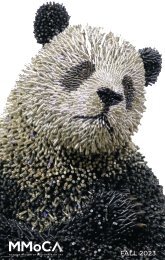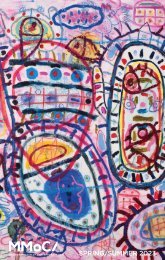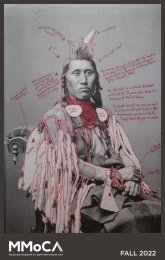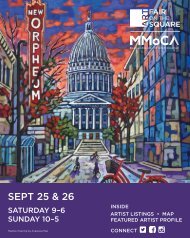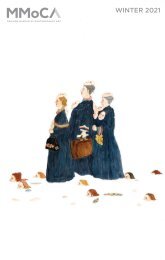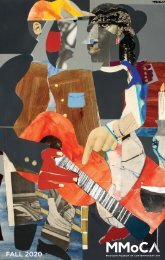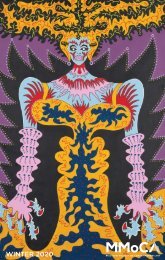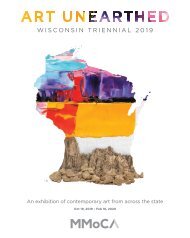Sebura&Gartelmann: Bonded exhibition catalog
Exhibition essay, images, and an interview with the artists. This catalog accompanies the exhibition in the Imprint Gallery.
Exhibition essay, images, and an interview with the artists. This catalog accompanies the exhibition in the Imprint Gallery.
Create successful ePaper yourself
Turn your PDF publications into a flip-book with our unique Google optimized e-Paper software.
the limits of the ideas are or the limits<br />
of the practices in that moment, at<br />
least. I think that that failure aspect is<br />
really critical in that it’s also a<br />
permission giving tool again, where<br />
we know it’s not always going to<br />
work, we know we’re going to make<br />
bad work because you have to, you<br />
know? You can’t make good work<br />
without making the bad work. You<br />
can’t have anything work without<br />
having things fail really, really badly.<br />
Q. A lot of your work is very physical<br />
and almost slapstick humor. How do<br />
you feel humor playing into your creative<br />
process and into your works?<br />
AG: Well, I think it stems from a variety<br />
of things. I mean, the kind of genesis<br />
of the physical, more slapstick driven<br />
type of action came from the two of<br />
us thinking about, you know, we both<br />
worked in the trades for a long time.<br />
And so these moments on a jobsite<br />
where you’re doing something with<br />
another person just to get it finished,<br />
even though it’s probably not the<br />
safest thing to do, but you’re putting<br />
an incredible level of trust in another<br />
person to stand on top of a ladder in<br />
a way you’re not supposed to or use<br />
a tool in a way that you’re definitely<br />
not supposed to. And so that was<br />
kind of like the starting point and then<br />
thinking, “Okay you know, the jobsite<br />
is a hyper masculine space,” right?<br />
What are these gestures that we can<br />
choreograph that start to challenge<br />
what that kind of hyper masculine<br />
mode of operating is? And what are<br />
other places in culture that we can<br />
start looking to that use the semiotic<br />
nature of that type of interaction?<br />
Things like slapstick, like Buster<br />
Keaton, or Looney Tunes. People<br />
always bring up Jackass with us, and<br />
that for us is a benchmark of where<br />
to stop, when it starts to feel like<br />
that. Then it’s not working, right?<br />
Because it morphs into this like super<br />
bro-y thing and then you lose all the<br />
nuance that we’re trying to build in<br />
about these questions about what<br />
masculinity is and how the nature<br />
of intimacy and love between men<br />
is shared. It disappears once you hit<br />
that.<br />
JS: I think the Stooges are really<br />
great. The Three Stooges are a really<br />
great example of absurdity but care<br />
and slapstick. They love each other,<br />
but will do what they have to do to<br />
get this thing done. It’s definitely so<br />
much a part of the work. I think we<br />
37







